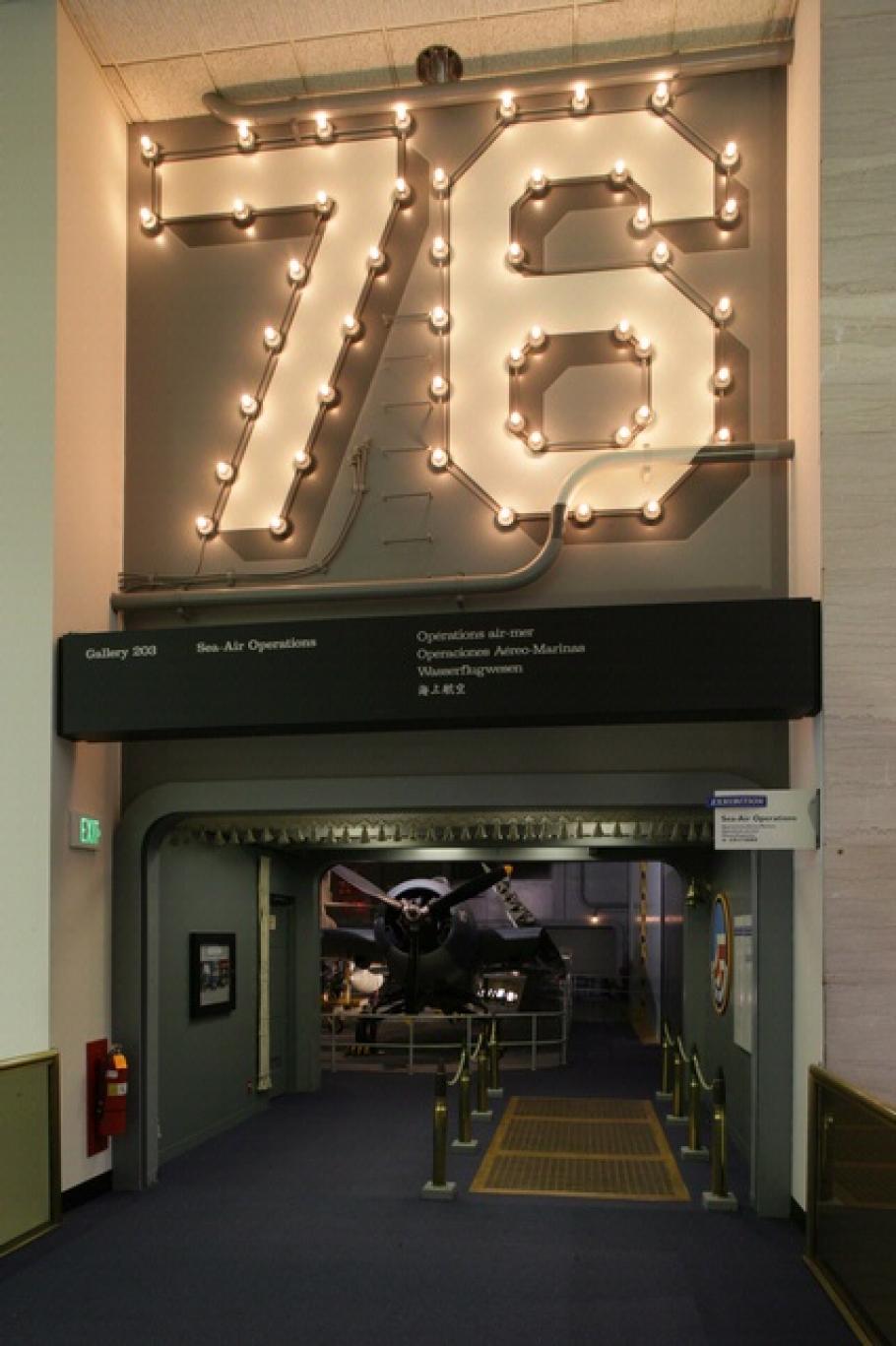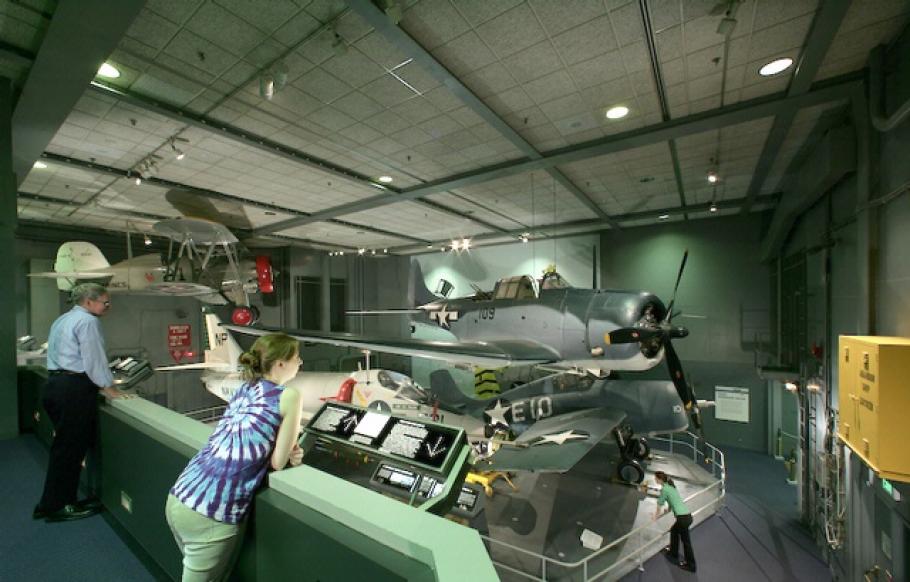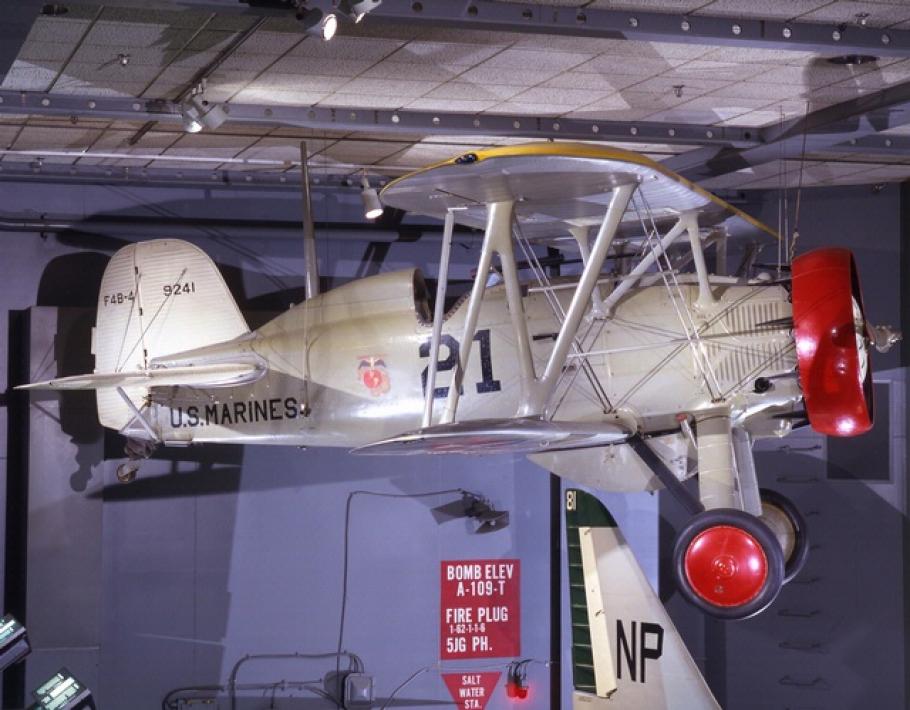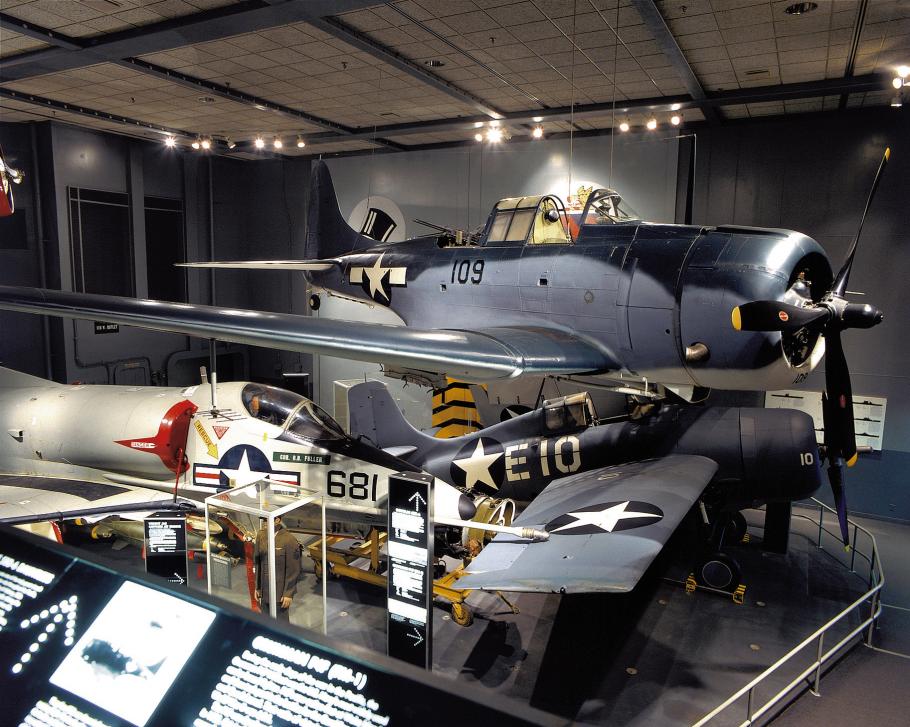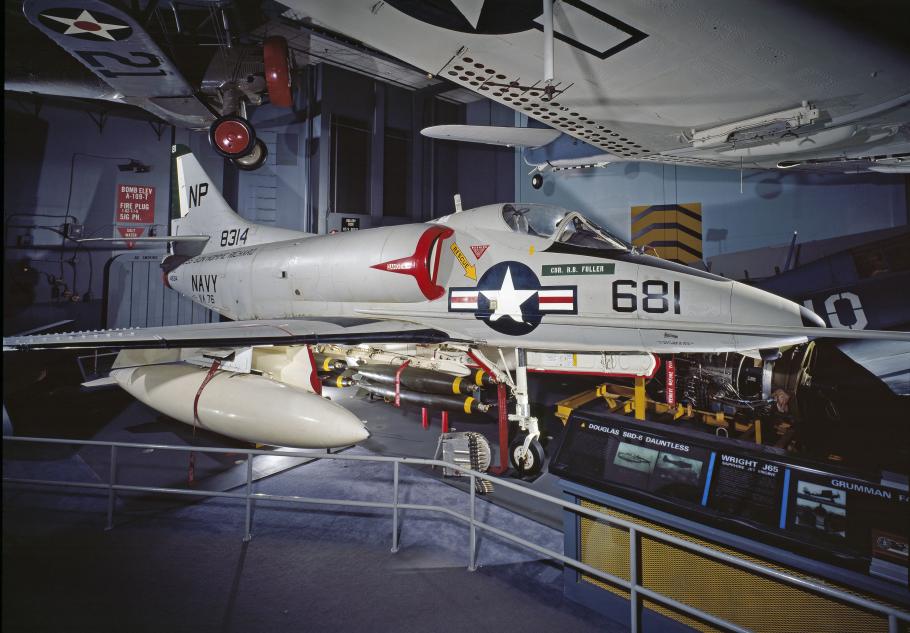When Secretary of the Navy William J. Middendorf II commissioned the USS Smithsonian, CVM-76, on June 28, 1976, he announced in authentic navy parlance that “the floors are now decks, walls are bulkheads and stairs are ladders. "Welcome Aboard!” Visitors to the gallery may not realize that exhibits artisans built the gallery using the decks, bulkheads, ladders and other parts removed from five famous American aircraft carriers. Senior curator Paul E. Garber visited the USS Essex (CVS-9), USS Intrepid (CV-11), USS Randolph (CV-15), USS Hancock (CV-19), and USS Shangri-La (CVS-38) and personally selected components for the gallery as navy personnel decommissioned the warships in 1975.
Four significant airplanes flown by U. S. Navy pilots are displayed inside the simulated hangar deck that fills much of the Sea-Air Operations Gallery. The father of Museum director and retired Marine Corps General Jack Dailey flew the Boeing F4B-4 biplane suspended from the gallery ceiling. General Dailey told me a few years ago that his dad
“flew [the F4B-4 in the Sea-Air Gallery] in 1934, and maybe other flights after that, which was the year I was born. He was on the Marine Corps flight demonstration team that toured the country with a 16-plane show to publicize Marine Aviation. They didn’t have a set routine they just followed the leader in a 16-plane tail chase which got pretty hairy. On one occasion the leader inadvertently stalled and spun back down through the formation so they all kicked it into a spin and followed him. I think the airplane we have was a spare because almost everyone in the squadron flew it.”
A Douglas SBD-6 Dauntless dive bomber is suspended from the ceiling next to the Boeing fighter. Dauntless pilots opened the large dive flaps perforated with holes at the trailing edge of the wing to slow the aircraft to about 443 kph (275 mph) during steep dives above a target. Pilots and gunners who crewed the SBDs (often called Slow-But-Deadly) did well in every engagement and suffered fewer losses than crews flying any other U. S. Navy carrier aircraft during World War II.
America entered World War II in December 1941 and by 1942, Grumman F4F Wildcats such as the one seen on the floor of the Sea-Air Operations Gallery equipped all U.S. Navy and Marine Corps fighter squadrons. New pilots making their first take off could often be spotted wobbling their Wildcats as they spun a crank 30 turns to retract the landing gear. U. S. Navy escort aircraft carriers operating in the Atlantic Ocean also carried Wildcats and the tough little fighter served from Pearl Harbor to the end of the war.
In his own words, "simplicate and add lightness" guided Douglas chief designer Ed Heinemann when he designed the Douglas A-4 Skyhawk that dominates the floor of the Sea-Air Operations Gallery. Key elements in the design are a strong and simple delta wing, a single engine and single pilot, which saved weight and complexity. The Skyhawk first flew in 1954 and by 1968, Skyhawks equipped 30 U. S. Navy and U. S. Marine Corps attack squadrons. Navy pilots assigned to VA-76 aboard the aircraft carrier USS Enterprise, CVA (N)-65, flew the Museum's Skyhawk during Iron Hand missions to suppress Surface-to-Air Missile radars from October 1965 to June 1966. Navy pilots also flew this Skyhawk from the USS Bon Homme Richard, CVA-31, operating off the Vietnam coast from March-June 1967, and USS Independence during the carrier’s cruise in the Mediterranean in May 1968.
